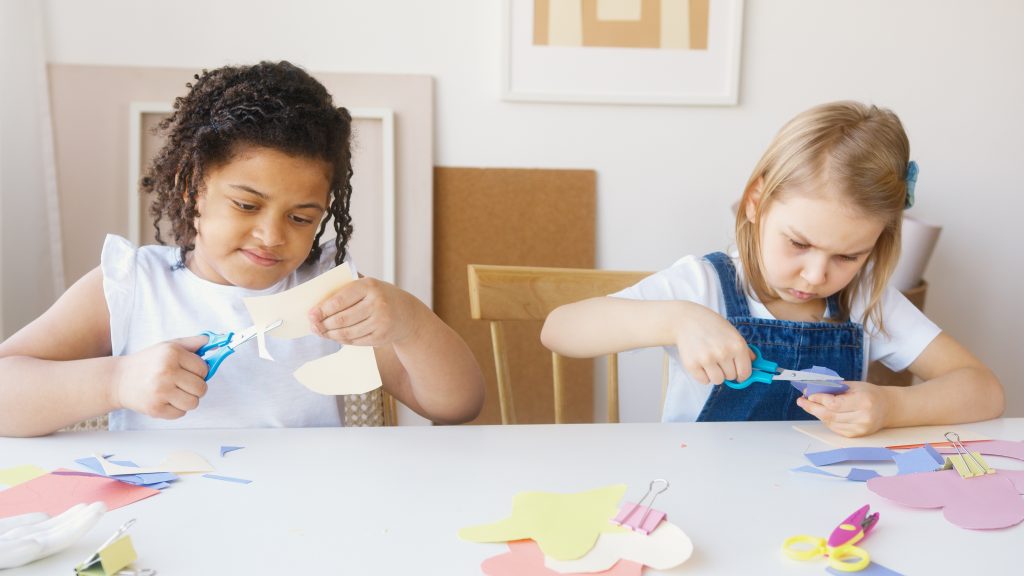
Humans have always been drawn to creative expression. Whether it’s through writing, painting, music, dance, or any other art form, there is something deeply satisfying about creating something that didn’t exist before. But why is creative expression so important? What benefits does it offer? And how can we incorporate it into our lives? In this article, we will explore these questions and more as we delve into the world of creative expression from words to brushstrokes.

The Different Forms of Creative Expression
There are countless ways to express ourselves creatively, and each form of creative expression offers its own unique benefits and challenges. Some of the most popular forms of creative expression include:
Writing
Writing is one of the most accessible and versatile forms of creative expression. From poetry and prose to journalism and memoir, there are countless ways to use words to express yourself. Writing can be a solitary activity, but it can also be a way to connect with others and share your ideas and experiences.
Painting
Painting is another popular form of creative expression that allows you to communicate visually. Whether you prefer watercolors, oils, or acrylics, painting can be a way to explore color, texture, and form. Painting can be a therapeutic and meditative activity, but it can also be frustrating and challenging.
Music
Music is a universal language that can evoke powerful emotions and connect people across cultures and languages. Whether you play an instrument, sing, or simply enjoy listening to music, there are many ways to express yourself musically. Music can be a way to relieve stress, connect with others, and tap into your creativity.
Dance
Dance is a physical form of creative expression that allows you to communicate through movement. Whether you prefer ballet, hip hop, or contemporary dance, there are many styles to choose from. Dance can be a way to express yourself physically, emotionally, and spiritually.
Other Art Forms
There are many other forms of creative expression, including sculpture, photography, filmmaking, and more. Each form of creative expression offers its own unique benefits and challenges, so it’s important to find the one that resonates with you the most.
Benefits of Creative Expression
So what benefits does creative expression offer? The benefits are numerous and wide-ranging, including:
Stress Relief
One of the most well-known benefits of creative expression is its ability to relieve stress. Engaging in a creative activity can help you relax, unwind, and shift your focus away from your worries and anxieties.
Improved Mood
Creative expression has also been shown to improve mood and increase happiness. When you engage in a creative activity that you enjoy, your brain releases dopamine, a neurotransmitter that is associated with pleasure and reward.
Increased Creativity
Engaging in creative expression can also help you become more creative in other areas of your life. When you practice a creative activity, you are exercising your creativity muscles, which can help you come up with new ideas and solutions.
Improved Cognitive Function
Creative expression has also been shown to improve cognitive function, including memory, attention, and problem-solving. When you engage in a creative activity, you are challenging your brain in new and different ways, which can help keep your mind sharp.
Increased Self-Awareness
Creative expression can also help you become more self-aware and develop a deeper understanding of yourself. When you engage in a creative activity, you are expressing your thoughts, feelings, and experiences, which can help you gain insight into your own psyche.
How Creative Expression Can Help with Mental Health
In addition to the benefits listed above, creative expression can also be a powerful tool for improving mental health. Many therapists and mental health professionals use creative expression as a therapeutic technique to help clients work through emotional issues and develop coping skills. Some ways that creative expression can help with mental health include:
Emotional Regulation
Engaging in a creative activity can help you regulate your emotions by providing a healthy outlet for your feelings. Rather than bottling up your emotions, you can express them through your art, which can help you process and release them in a healthy way.
Self-Expression
Creative expression can also help you express yourself in a way that you may not be able to do with words alone. This can be especially helpful for people who struggle with communication or have difficulty expressing themselves.
Mindfulness
Engaging in a creative activity can also be a form of mindfulness, which has been shown to be an effective tool for reducing anxiety and depression. When you focus on your art, you are fully present in the moment, which can help you let go of worries and anxieties.
Self-Esteem
Creative expression can also help boost self-esteem by providing a sense of accomplishment and pride in your work. When you create something that you are proud of, it can help you feel more confident and capable.
How to Get Started with Creative Expression
If you’re new to creative expression, it can be overwhelming to know where to start. Here are some tips for getting started:
Start Small
Don’t feel like you have to create a masterpiece right out of the gate. Start small and work your way up. Choose a simple project or exercise to get started, and gradually work your way up to more complex projects.
Practice Consistently
Like any skill, creative expression takes practice. Make a commitment to practice your chosen art form regularly, even if it’s just for a few minutes a day. Consistency is key when it comes to building your skills and developing your creativity.
Experiment
Don’t be afraid to try new things and experiment with different techniques and styles. This can help you discover what you enjoy most and what works best for you.
Find a Community
Connecting with other people who share your interest in creative expression can be a great way to stay motivated and inspired. Look for local art groups, writing circles, or online communities to connect with other creatives.
Tips for Finding Inspiration and Overcoming Creative Blocks
Even the most experienced creatives can struggle with finding inspiration or overcoming creative blocks. Here are some tips to help:
Take a Break
If you’re feeling stuck or uninspired, taking a break can often help. Step away from your art for a little while and do something else. This can help clear your mind and give you a fresh perspective.
Change Your Environment
Sometimes a change of scenery can help jumpstart your creativity. Try working in a different space or location, or take your art outside for a change of pace.
Try Something New
If you’re feeling stuck in a rut, trying something new can help spark your creativity. Take a class or workshop in a different art form, or experiment with a new technique or style.
Collaborate with Others
Collaborating with other creatives can be a great way to get new ideas and perspectives. Look for opportunities to collaborate with other artists or writers, or join a group project.
The Therapeutic Benefits of Art Therapy
Art therapy is a form of psychotherapy that uses creative expression to help clients work through emotional issues and develop coping skills. Art therapists are trained mental health professionals who use art as a tool to help clients express themselves and process their emotions. Some of the benefits of art therapy include:
Increased Self-Awareness
Art therapy can help clients become more self-aware and develop a deeper understanding of their emotions and experiences.
Emotional Regulation
Art therapy can also help clients learn to regulate their emotions by providing a healthy outlet for their feelings.
Stress Relief
Engaging in creative expression can be a relaxing and therapeutic activity that can help reduce stress and anxiety.
Improved Communication
Art therapy can also help clients improve their communication skills by providing a non-verbal way to express themselves.
The Role of Creative Expression in Personal and Professional Development
In addition to its therapeutic benefits, creative expression can also play a role in personal and professional development. Here are some ways that creative expression can help:
Professional Development
Creative expression can help develop skills that are valuable in the workplace, such as problem-solving, communication, and creativity. People who engage in creative activities are often more innovative and adaptable, which can be a valuable asset in any career.
Personal Development
Creative expression can also help with personal development by providing a way to explore your emotions, beliefs, and values. When you engage in a creative activity, you are expressing a part of yourself, which can help you develop a deeper understanding of who you are.
Famous Artists and Their Creative Processes
Many famous artists have developed their own unique creative processes that help them produce their best work. Here are a few examples:
Pablo Picasso
Picasso was known for his experimentation and willingness to take risks in his art. He often worked on multiple pieces at once, and would frequently destroy and rework his own work.
Georgia O’Keeffe
O’Keeffe was known for her close-up paintings of flowers and other natural objects. She would often spend hours studying her subject before painting it, and would use bold colors and abstract shapes to create a sense of movement and energy.
Vincent van Gogh
Van Gogh was known for his bold use of color and impasto technique, which involved applying thick layers of paint to the canvas. He would often paint quickly and intuitively, allowing his emotions to guide his brushstrokes.
Conclusion – The Importance of Incorporating Creative Expression into Your Life
Creative expression is a powerful tool for reducing stress, improving mood, and developing creativity and cognitive function. Whether you prefer writing, painting, music, dance, or any other form of creative expression, incorporating it into your life can have a profound impact on your well-being and personal development. So why not pick up a pen, a paintbrush, or a musical instrument, and start creating something today? You might be surprised at what you can accomplish.
